In a Rush? Get the Summary in Seconds
Omnichannel communication is a unified strategy that integrates multiple customer communication channels—such as email, phone, social media, and live chat—into a seamless experience. Unlike multichannel communication, which operates channels separately, omnichannel ensures interactions flow smoothly across platforms without customers needing to repeat themselves.
- How It Works?
- Best Practices for Implementation
- Centralize Customer Data- Ensure all channels have real-time access to customer interactions.
- Integrate Communication Channels - Sync all touchpoints into one platform for a seamless experience.
- Leverage AI and Automation - Use chatbots and automation to enhance efficiency and response times.
- Monitor & Optimize Performance - Track engagement data and refine strategies for continuous improvement.
Omnichannel communication connects all customer interactions through a centralized system, allowing smooth transitions between channels. Cloud-based platforms store real-time interactions, enabling customer service agents to access conversation history instantly. AI chatbots and CRM tools further enhance the experience by automating responses and predicting customer needs.
This blog will explain omnichannel communication, its operation, and its main advantages.
Communication with customers is subject to channels such as social media, email, phone, and live chat. But what happens when these channels do not connect? Disappointment builds, the conversation becomes repetitive, and the customer experience suffers. This is where omnichannel communication changes the game.
Omnichannel communications allow for integrated and seamless experiences through the combination of all customer touchpoints. An example of effective communication with customers is that different channels and touchpoints engage customers. Omnichannels that embrace communication improve business engagement, promote retention, and increase revenue.
- 90% of customers expect steady interactions across channel,emphasizing the need for integrated conversation techniques.
What Is Omnichannel Communication?
Omnichannel communication refers to a unified strategy that integrates multiple channels to create a seamless customer experience. This omnichannel definition highlights how businesses can streamline interactions across email, social media, phone, and chat to improve customer engagement.
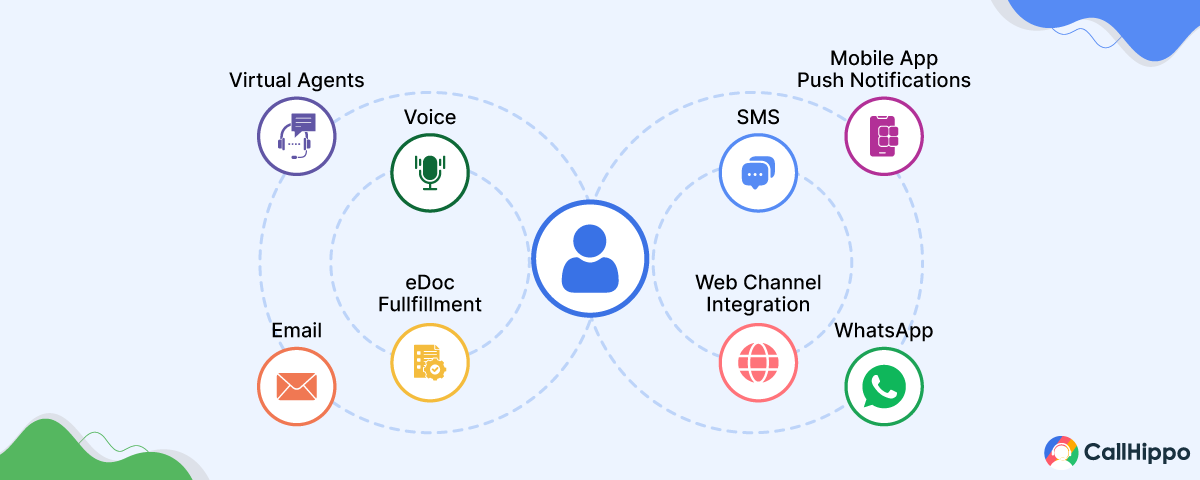
When considering traditional multi-channel approaches, we revolve around the independent standalones of each individual platform. Omnichannel communication will take care of these interactions right across the board, allowing conversations to move with the current of flows from one to the other.
Customers can switch between channels with little effort while not having to repeat themselves; hence, it is a more personalized and effective experience. For businesses, it is a lot more than the use of various channels but it is about how to actually bring them together. A truly omnichannel strategy is one in which the customer data, conversation history, and preferences are shared across platforms.
How Does Omnichannel Communication Work?
Omnichannel communication connects all customer interactions, including that done through digital channels, to one integrated system. This ensures a spontaneous transition between email, live chat, phone, social media, and messaging apps. Customers can switch channels without losing their references, improving efficiency and satisfaction.
The cloud-based system stores all interactions in real time. When customers contact agents, they can immediately use previous conversations, reducing recurrence and speeding up response time. AI Chatbots, Automation, and CRM tools increase omnichannel communication by personalizing interactions and predicting customers’ needs.
Businesses can provide frequent and efficient customer support with a well-structured omnichannel communication system. With omni channel customer communications, businesses can track interactions, automate responses, and optimize engagement at every customer touchpoint.
- Use AI-powered CRM to store real-time customer interactions and predict customer needs.
Benefits of Omnichannel Communication
Omnichannel communication smoothens and creates a more connected customer experience. This, in turn, increases engagement, boosts efficiency, and drives satisfaction up. Omnichannel communication enhances customer support and makes sure each customer’s issue is solved in a timely manner, delivering better customer satisfaction metrics altogether. Here are four key advantages:
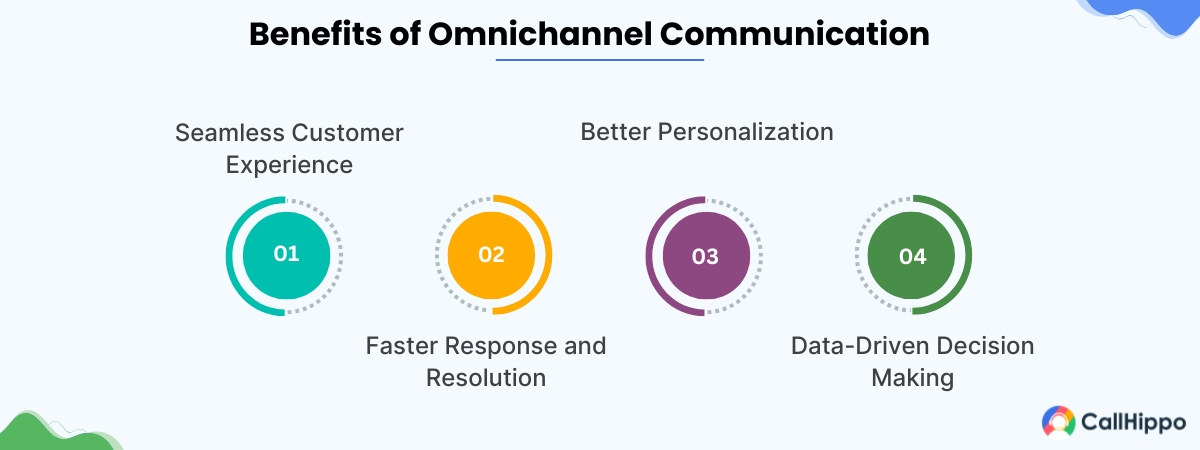
1. Seamless Customer Experience
Customers can switch between channels without repeating themselves. This creates an exceptional omnichannel customer experience by incorporating in-app messaging and multimedia elements. All interactions stay connected in a unified system. This makes communication smooth and frustration-free.
2. Faster Response and Resolution
Agents get instant access to past conversations, enhancing customer communications by ensuring effective messaging across various channels. This reduces wait times and improves efficiency. Quick resolutions lead to better customer satisfaction.
3. Better Personalization
AI and CRM tools track customer behavior. Businesses can send personalized responses based on past interactions. This strengthens relationships and increases engagement. A seamless and consistent experience throughout the customer journey is crucial as customers engage with a brand across various channels.
- 80% of customers are more likely to purchase from a brand that personalizes experiences.
4. Data-Driven Decision Making
The omnichannel platforms provide real-time insight. Businesses can analyze data to refine strategies. This improves omnichannel customer service and enhances performance. With omnichannel communication, businesses create constant, efficient, and personal experiences that can bring long-term success.
Best Omnichannel Communication Providers
Selecting the right omnichannel communication provider ensures seamless and efficient customer interactions. Here are the top platforms offering robust features and AI-driven solutions.
| Platform | Key Features | Best For | Pricing Starts From | Free Trial Available |
|---|---|---|---|---|
| CallHippo | Faster Response Times, Enhanced Personalization, and Data-driven Decision making | Growing SMBs needing VoIP & outbound calling tools | $16/user/month | 10-day free trial available |
| Zendesk | Unified dashboard for chat, email, phone, social; AI Answer Bot; support in 40+ languages | Mid-size to enterprise support teams needing global, scalable CX | From approx. $49/agent/month | 14-30 Days |
| Freshdesk | Live chat + WhatsApp + email unified; intelligent routing (omniroute); Freddy AI chatbots | SMBs wanting powerful omnichannel support at accessible cost | From $15/agent/month (annual Growth plan) | 14 Day free trial |
| HubSpot | Free CRM-integrated live chat, email, bots; central activity feed across channels | Startups and small businesses prioritizing growth and marketing automation | $18/month | Yes |
| Tidio | AI chatbot (handles 70% queries), live chat, social/SMS integrations in unified inbox | Small and mid-size businesses with budget constraints needing AI chat | $29/month | Yes |
| Intercom | Shared inbox, automated bots, AI-powered routing, multi-channel messaging & reporting | Growth-oriented businesses needing conversational support + marketing tools | From $59/month | Yes |
After extensive research and analysis, we have curated a list of Omnichannel Communication Platform. These software are carefully selected based on usability and satisfaction scores, including features, ease of use, customer support, ratings, and reviews from SoftwareSuggest, G2, and Capterra. Our aim is to assist businesses in identifying the most suitable software to streamline their operations.
1. CallHippo
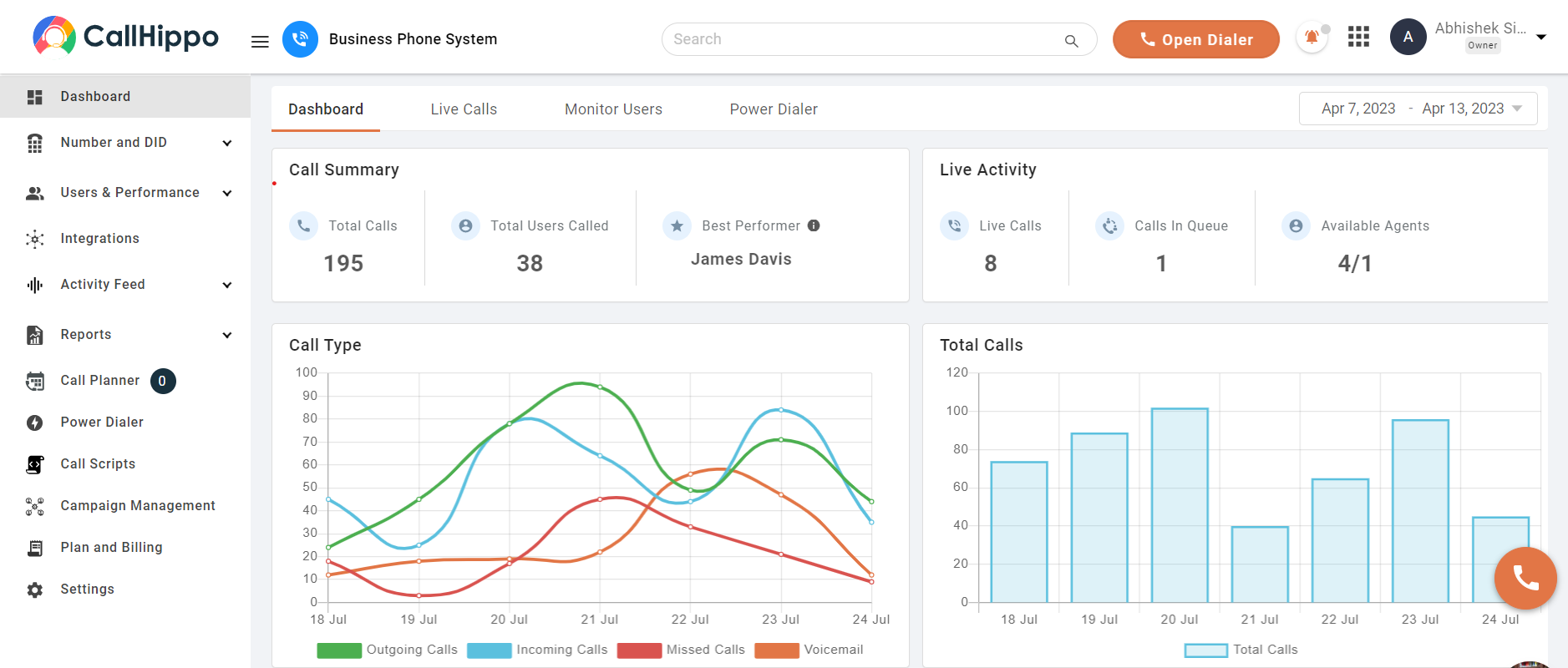
CallHippo is a cloud-based business communication platform designed to improve customer interactions by supporting seamless communication through multiple communication channels. It offers smooth communication through various channels, providing a unified experience. Businesses can automate call, message, and customer support management. CRM integrations enhance efficiency, smoothing operations.
Top Features
- Virtual phone numbers
- Multi-channel communication
- AI-powered analytics
- AI Agent
- Smart call forwarding
- Easy to set up without needing technical expertise.
- Affordable pricing helps businesses scale communications easily.
- Integrates smoothly with CRM and helpdesk tools efficiently.
- Limited options for customizing in-depth reporting and analytics.
- Advanced AI features are available only in premium plans.
Pricing
- Basic Plan: Starts at $16 per user/month.
- Platinum Plan: Starts at $40 per user/month.
2. ControlHippo
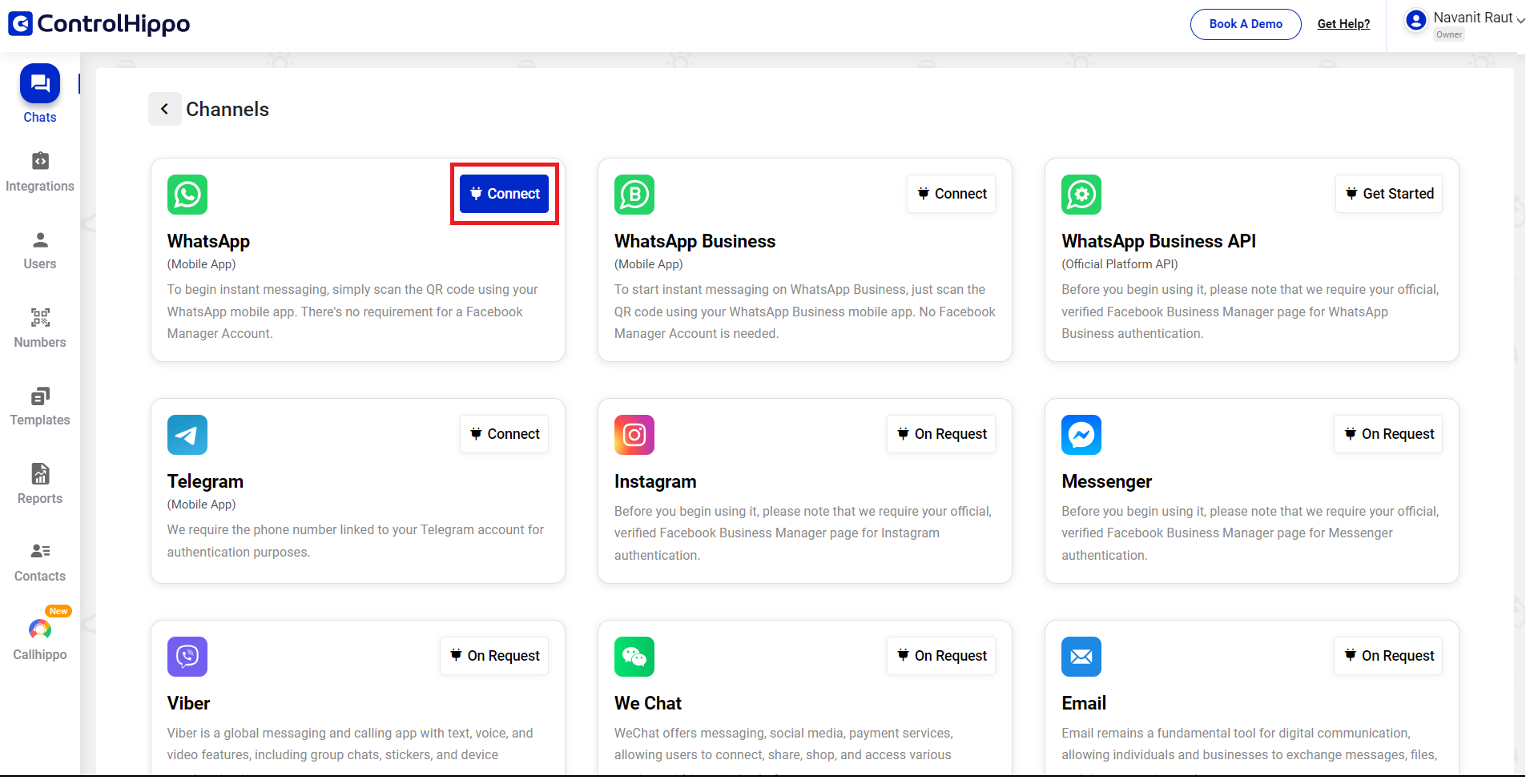
ControlHippo is an omnichannel communication platform that centralizes messaging and automation as part of a comprehensive multichannel communication strategy. It simplifies interactions with AI-powered tools for better customer engagement. Businesses can manage communication across multiple channels from a single dashboard. The AI chatbot builder automates responses, improving customer support efficiency. It helps businesses to personalize interactions and reduce manual workload effectively.
Top Features
- Unified inbox
- AI chatbot builder
- CRM integrations
- Real-time analytics
- Streamlines communication across platforms, reducing response delays.
- AI chatbot builder automates conversations for faster support.
- Enhances engagement with personalized, AI-driven interactions.
- Limited advanced reporting for deeper data-driven decisions.
- Requires technical knowledge for setting up automation workflows.
Pricing
- Contact sales for pricing.
- Shoppers from omnichannel have a 30% higher lifetime value,compared to those who shop through a single channel, suggesting greater customer loyalty and revenue opportunities.
3. RingCentral
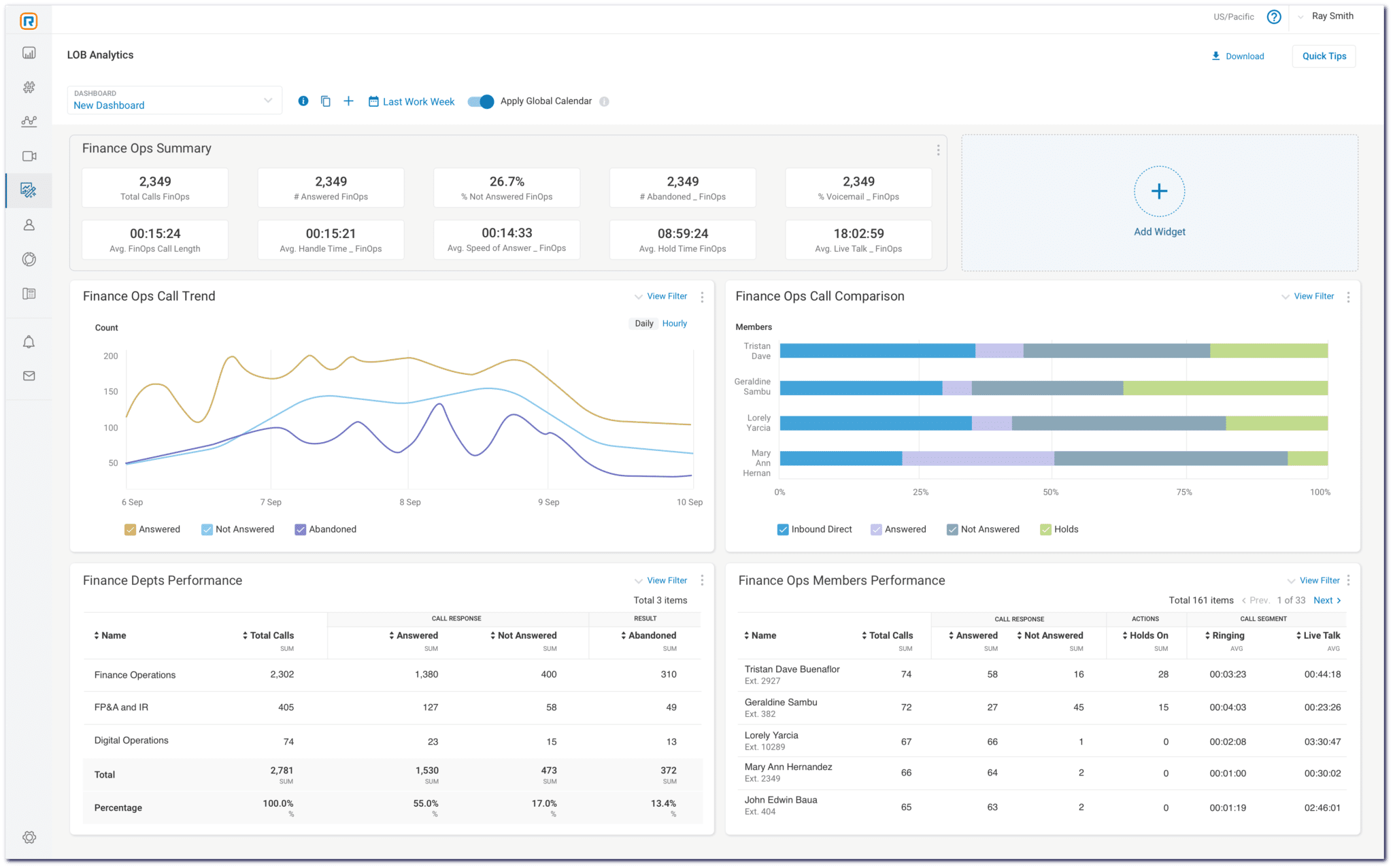
RingCentral is a cloud-based omnichannel communications platform for businesses of all sizes. It connects customers through voice, video, chat, and messaging. Integrating offline and digital channels creates a consistent brand experience and enhances customer interactions. AI-powered automation enhances workflows, improving overall communication efficiency. Businesses can ensure smooth customer interactions with advanced security and integrations.
Top Features
- Cloud phone system
- Video conferencing
- AI-powered transcription
- Omnichannel support
- Scalable for small businesses and large enterprises alike.
- Strong security safeguards data across every channel.
- Dependable customer support aids users in swiftly resolving issues.
- Higher pricing compared to some competitors in the market.
- Learning curve for advanced analytics and automation features.
Pricing
- Core Plan: Starts at $20 per user/month.
- Ultra Plan: Starts at $35 per user/month.
4. Zendesk

Zendesk is an omnichannel communication solution focused on customer service. It combines online and offline channels, including email, social media, voice, and chat, into a single platform. Automation tools enhance support efficiency and elevate customer experiences. Businesses can improve response times and customer satisfaction through AI-driven insights.
Top Features
- AI-powered chatbots
- Helpdesk system
- Multi-channel support
- Advanced analytics
- Ideal for support teams managing high-volume customer interactions.
- AI-driven insights improve automation and reduce response time.
- Scalable platform allows businesses to expand customer service.
- Higher-tier plans can be expensive for small businesses.
- Essential features require integrations, making setup more complex.
Pricing
- Suite Team: Starts at $55 per user/month.
- Suite Enterprise: Custom pricing available.
5. Salesforce
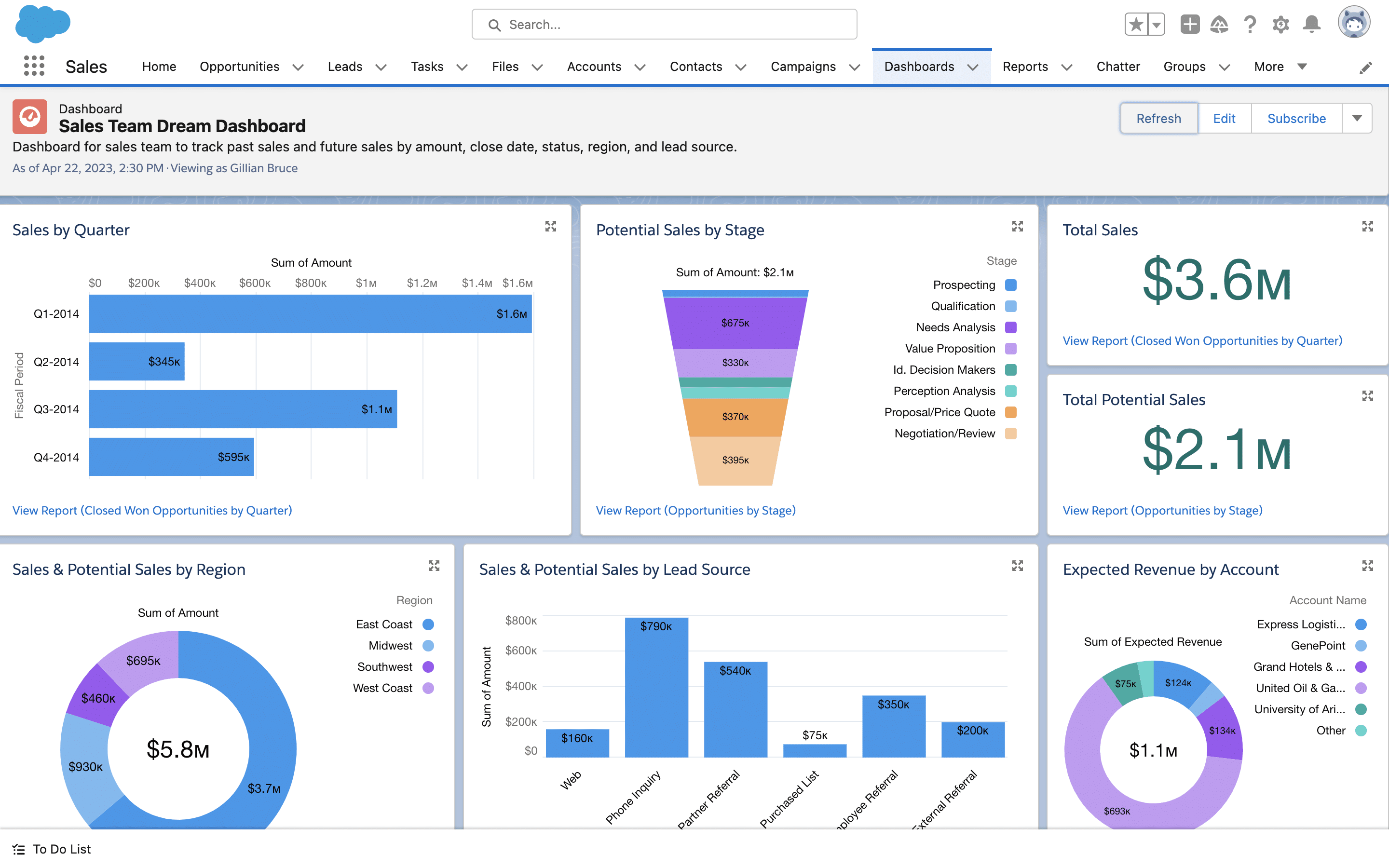
The salesforce is a major omnichannel communication platform for customer engagement. It provides sales, marketing, and support solutions in an integrated interface. AI-powered insight increases decision-making for better customer interaction. Businesses can automate expeditions, and customers can basically adapt to travel.
Top Features
- AI-powered insights
- Journey automation
- CRM integrations
- Multi-channel communication
- Comprehensive tools make it ideal for enterprise businesses.
- AI-driven insights improve engagement and marketing effectiveness.
- Extensive customization allows tailored automation and workflows.
- Requires training, making onboarding longer for new users.
- Higher costs may not suit small businesses' budgets.
Pricing
- Marketing Cloud Engagement: Starts at $1,250/month.
- Sales Cloud: Starts at $25 per user/month.
6. Genesys
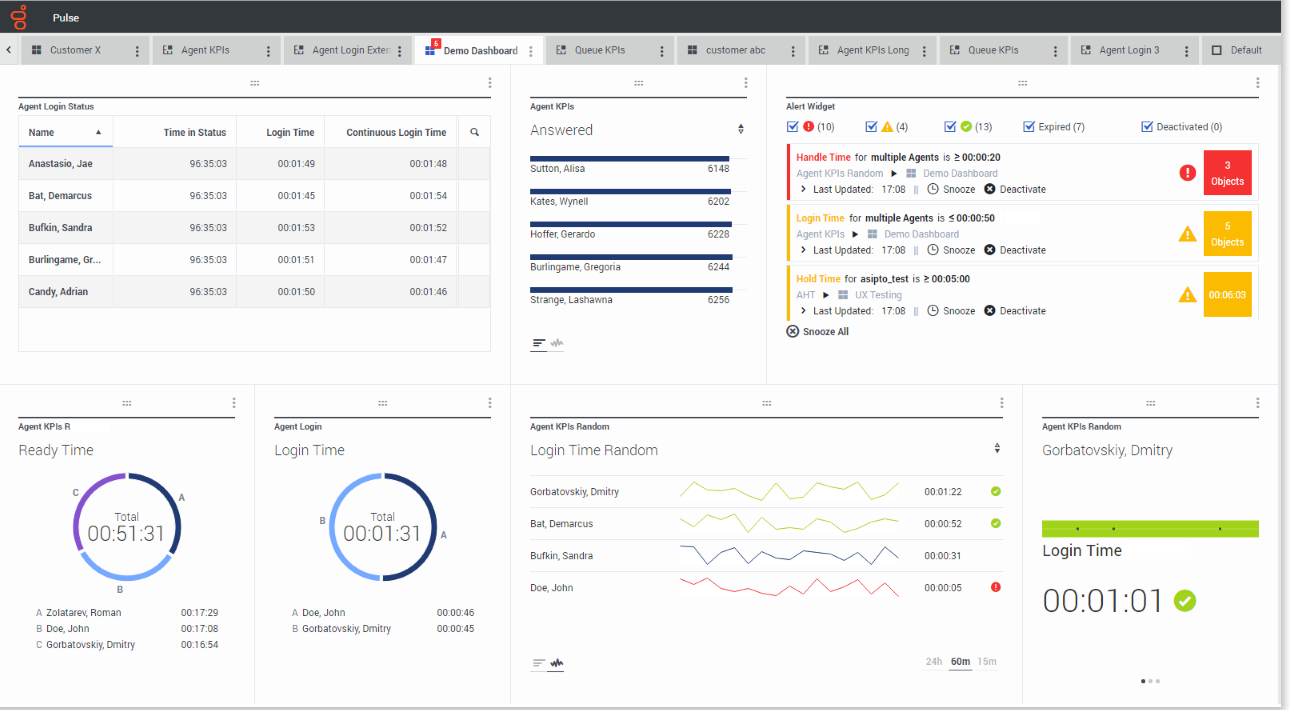
Genesys provides an AI-powered omnichannel communication platform for enterprises. It offers real-time customer engagement tools and automation features. Businesses can track performance and integrate CRM for better customer interactions. Security measures ensure compliance and data protection.
Top Features
- AI-driven engagement
- Multi-channel support
- Performance tracking
- CRM integrations
- AI-driven personalization improves customer experiences significantly.
- Strong security measures protect customer data effectively.
- Scalable for businesses needing advanced communication solutions.
- Expensive for small businesses with limited communication needs.
- Requires training to fully use advanced customization tools.
Pricing
- Cloud CX 1: Starts at $75 per user/month.
- Cloud CX 3: Starts at $150 per user/month.
Omnichannel vs. Multichannel Communication
Omnichannel integrates customer communication better than multichannel. By using varied channels and touchpoints, omnichannel communication creates an easygoing customer experience, while multichannel communication keeps interactions isolated across different platforms.
| Feature | Omnichannel Communication | Multichannel Communication |
|---|---|---|
| Integration | All channels are connected for a unified experience. | Channels operate separately without synchronization. |
| Customer Experience | Seamless and personalized across all touchpoints. | Varies by channel, leading to inconsistent interactions. |
| Data Sharing | Centralized customer data improves insights and engagement. | Data remains fragmented across different channels. |
| Engagement | Higher engagement due to continuity in conversations. | Lower engagement as interactions are disconnected. |
| Effectiveness | More effective in building strong customer relationships. | Not as effective since customers might have to repeat information. |
- Omnichannel and multichannel are the same: Omnichannel ensures a connected experience; multichannel doesn't.
- Multichannel is enough for customer satisfaction: Barring integration, customers are likely to find service inconsistent.
- Omnichannel is only for large businesses: Any business can benefit from a seamless, unified communication strategy.
Best Practices for Implementing Omnichannel Communication
A successful omnichannel communication strategy requires seamless integration and customer-centric execution. Implement these best practices to boost engagement and simplify interactions.
1. Centralize Customer Data
Store customer interactions in a unified database for consistency. Ensure all channels have real-time access to updated information. This enables personalized and efficient communication.
2. Integrate All Communication Channels
Sync customer communications, including emails, calls, chats, and social media, into one platform. This ensures a smooth transition between channels without losing context. Customers should experience continuity across every touchpoint.
3. Leverage AI and Automation
Use AI-powered chatbots and automation for quick responses. Automate monotonous tasks to enhance efficiency and minimize wait times. Intelligent routing directs queries to the appropriate department immediately.
4. Monitor and Optimize Performance
Track customer interactions and analyze engagement data regularly. Identify gaps and improve weak areas for a better experience. Continuous optimization ensures long-term success in omnichannel communications.
Conclusion
Omnichannel communication allows customers to interact with the business through limitless and seamless communication from any platform. This is interesting because it enhances engagement, increases customer satisfaction rates, and improves business operations. However, to devise an effective omnichannel communication strategy, the actual tools integrated with AI capabilities must be regularly optimized for performance.
FAQs
1. How Can Small Businesses Implement Omnichannel Communication Without a Large Budget?
Small businesses could set up low-budget processes by using cloud-based communication platforms. They can integrate basic channels of communication, such as phone, email, and social media. Automation processes and AI-powered chatbots would enhance the operations with lesser costs involved therein.
2. What Role Does AI Play in Enhancing Omnichannel Communication?
AI enhances omnichannel communication by handling the responses of chatbots and personalizing interaction, allowing instant replies to customer queries from AI. AI provides a data-informed view of customer behavior along with deep insights as well.
3. How Do You Measure the Success of an Omnichannel Communication Strategy?
Success stories can be told through customer satisfaction scores, engagement rates, and time taken in replying back. Businesses should track retention rates and conversion metrics across channels. Regular feedback and performance analytics help refine the strategy for continuous improvement.
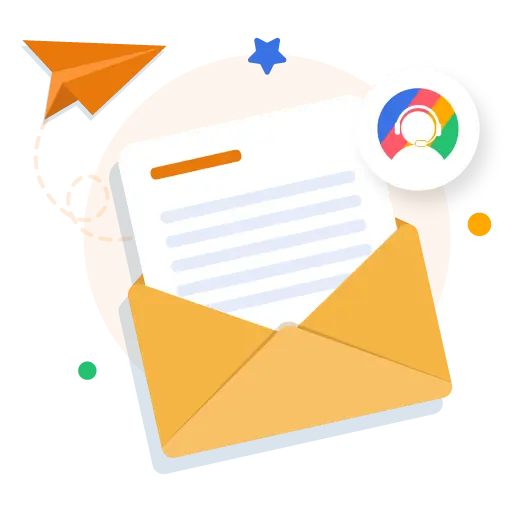
Subscribe to our newsletter & never miss our latest news and promotions.









